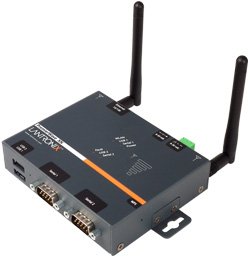Email, sometimes written as e-mail, is simply the shortened form of
“electronic mail,” a system for receiving, sending, and storing
electronic messages. It has gained nearly universal popularity around
the world with the spread of the Internet. In many cases, email has
become the preferred method for both personal and business communication.
Tomlinson's idea was to identify the name of the user and the computer at which he or she was located. As a result, the basic formula for addressing an email was username@usercomputer. This standard has not changed much over the years, other than the user computer is now commonly replaced by the name of a service provider.
Another privacy concern is that every electronic message becomes a more or less permanent record of the communication. Selecting a message for deletion will remove it from the visible queue on the user’s account, but a person should never assume that the message is truly gone; deleted emails are notoriously easy to resurrect. Even if the sender uses specialized software to thoroughly obliterate all traces of the message from his or her computer, copies of the email will likely still exist on the receiver’s end, as well as on many of the servers across which it traveled. Consequently, it is unwise to send sensitive information by this method without carefully considering the possibility that an outside party could get hold of it. Since emails are automatically time and date stamped, these records are often subpoenaed by courts in order to establish a time line for a particular chain of events.
How It Is Used
Messages sent by electronic mail normally reach a recipient’s account within seconds. They frequently include more than just text; images and numerous types of formatted documents are now easily included as attached files. Moreover, it is no longer necessary to be sitting in front of a PC to send or receive an email. A variety of mobile devices, such as tablet computers and smart phones, make it possible manage correspondence on the go.Protocols
Users receive and send messages using standardized protocols that make it possible for emails to travel seamlessly between computers running different types of software, and across different kinds of servers on various networks. Simple message transfer protocol (SMTP) enables the actual sending and receiving of messages. Other protocols, including Post Office Protocol (POP) and Internet Message Access Protocol (IMAP), allow users to retrieve and store messages over time.Client Software
In the beginning, a program, called “client software,” was necessary to handling the mail. There are many different email applications available, some of which cost money to use while others are free; some Internet providers even include it with the service. Client software is still used today, but there is another more flexible method that has become more popular in recent times.Webmail
In addition to accessing electronic mail through client software, webmail is another popular option. Most service providers offer this as an additional benefit, where the user can access his or her mailbox over the Internet, from any computer or other web-connected device. Some email services are specifically designed for using the World Wide Web as their primary interface. These sites, called "portals," have become very popular, as they usually offer individuals a chance to open an email account at no charge, along with access to a search engine, news, calendar, and many other resources from a single spot.History
Though there is some degree of uncertainty as to when email was invented, the father of the modern version is generally regarded to be an American, Ray Tomlinson. Before Tomlinson, users could send messages to each other, but only when they were connected to the same computer. Even once computers were networked, messages could not be targeted to a particular individual. Tomlinson devised a way to address mail to certain users, and thus was credited for one of the most important communication inventions in the 20th century.Tomlinson's idea was to identify the name of the user and the computer at which he or she was located. As a result, the basic formula for addressing an email was username@usercomputer. This standard has not changed much over the years, other than the user computer is now commonly replaced by the name of a service provider.
Privacy Concerns
From a legal standpoint, email is generally treated as a private form of communication, much the same as a phone call, or even a hand written letter; the specifics will vary from one country to another, but it is typically illegal to access, read, or publish another person’s messages without permission. It is important to understand, however, that it is relatively easy for hackers to intercept electronic mail. Moreover, many companies require that their employees sign an agreement granting the employer permission to monitor all messages sent from, or received at corporate email addresses.Another privacy concern is that every electronic message becomes a more or less permanent record of the communication. Selecting a message for deletion will remove it from the visible queue on the user’s account, but a person should never assume that the message is truly gone; deleted emails are notoriously easy to resurrect. Even if the sender uses specialized software to thoroughly obliterate all traces of the message from his or her computer, copies of the email will likely still exist on the receiver’s end, as well as on many of the servers across which it traveled. Consequently, it is unwise to send sensitive information by this method without carefully considering the possibility that an outside party could get hold of it. Since emails are automatically time and date stamped, these records are often subpoenaed by courts in order to establish a time line for a particular chain of events.

No comments:
Post a Comment